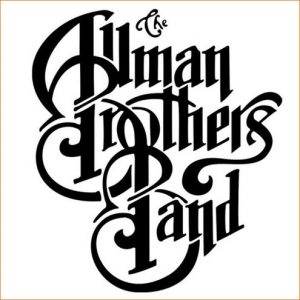The Asbury Park Press
22 August 2004
By Mark Voger
Staff Writer
“When he died, a piece of me went with him.”
So says photographer Jim Marshall of guitarist Duane Allman in his glossy new book of photography, “Jim Marshall: Proof” (Chronicle Books).
Marshall has photographed many an album cover, including 1971’s “At Fillmore East,” which captures Duane laughing with his fellow band members, including his brother, singer-keyboardist Gregg Allman. (The image, along with outtakes from the photo session, are included in “Jim Marshall: Proof.”)
Within months of the album’s release, on Oct. 29, 1971, then-24-year-old guitarist Duane Allman was killed in a motorcycle accident.
As the Allman Brothers Band makes its way across the country on tour (including a stop in Holmdel on Wednesday), the man who founded the band in the late ’60s is remembered by his brother Gregg.
“My brother built the band,” declares the Nashville native, 56.
Gregg recalls that he and Duane had played together since the early ’60s. But in 1968, a contractual quagmire split up the duo. To get out of a soured record deal, Gregg was retained as a studio musician in Los Angeles while Duane was let go; Duane relocated to Florida.
“We were separated for the first time in our lives,” Gregg recalls. That was probably one of the worst 11 months of my life.”
In the meantime, Duane was hired to work as a musician on staff at Fame Studios in Muscle Shoals, Alabama.
“He got a lot of work down there and he kind of made a name for himself,” Gregg says.
A lot of work, indeed. Duane emerged as the studio’s top session guitarist, gaining much musical expertise in the process.
“He learned how to play slide, too, in those 11 months that we were apart,” Gregg points out.
As this was happening, Duane began to put together a band – one in which he intended his brother to play a role.
Recalls Gregg: “My brother calls me and he says, `Oh, by the way.’ He was tellin’ me about the band, right? This was on the 23rd of March, 1969. He called me and asked me if I wanted to come back and join ’em.
“He said, ‘We’ve got two lead guitar players.’ I’m goin’, ‘What? What?’ ‘… two drummers …’ I’m goin’, ‘What?’ I said, ‘Two full drummers?’ I thought, ‘That must sound like a train wreck.”‘
Then Duane said something Gregg will never forget.
“He probably paid me the best compliment he ever gave me,” Gregg says. “He said, ‘I need you to come here, ’round this up and send it somewhere.'”
Send it somewhere, he did.
In 1971, the Allman Brothers Band scored its commercial breakthrough with “At Fillmore East.” The band was riding a wave of success when it entered the studio to record its followup, “Eat a Peach.”
“Oh, man, it was wonderful,” Gregg says of the “Peach” sessions.
“Because, I mean, our last record, ‘At Fillmore East,’ had gone good. And, hell, we were ready, man. I mean, this was our second big record. That record was really fun to cut, you know, until the accident.”
Gregg gets a bit quiet when asked if it was a good time in Duane’s life.
“Oh, yes,” Allman drawls. “A very good time. Very good time. Yeah, and he had met him a new woman. He was very much in love. Yeah, he was in very happy spirits. Sure.”
(“Eat a Peach” was finished posthumously and released with the subtitle “Dedicated to a brother.”)
For two years following Duane’s death, Gregg fell into a deep depression.
“I had the wind pretty well knocked out of me,” he says. “I weighed about 150 pounds.”
What brought him back?
“I don’t know that I came back ’til recently,” Gregg says with a chuckle.
Then, the answer comes to him.
“The music, the music, the music brought me back,” Gregg says.
“The music and the band stayin’ together kept me and possibly others from really hurtin’ ourselves or becoming just a real lush or, I dunno, a lost soul of the world. If we hadn’t have stayed together, I don’t know what our plights would have been.”
(c) Copyright 2004, Asbury Park Press. All Rights Reserved.



